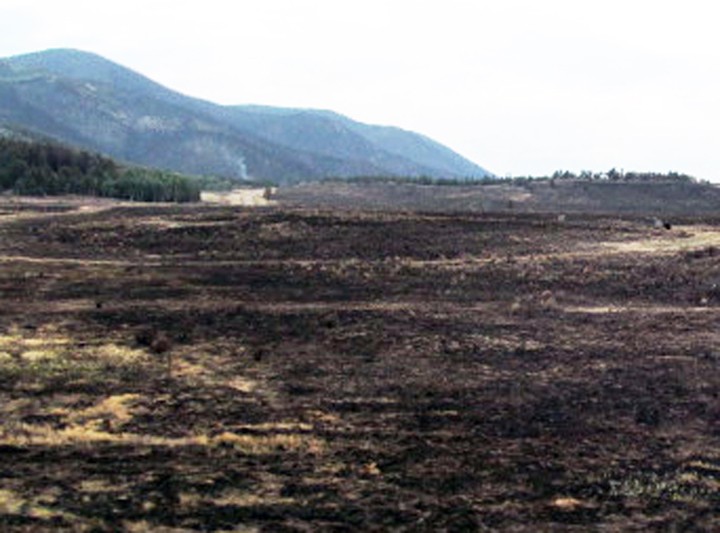Operations scaled back on Spring Fire

VALLEY — Firefighting and support operations continued to decrease on Monday as the Spring Fire remained more than 90 percent contained.
On Monday the Rocky Mountain Blue Team transferred command to a Type 4 Organization, and the remaining 30 Colorado National Guard members who had been assisting with property and resident protection were released.
During the fire, nearly 100 soldiers and airmen provided traffic control points, evacuated-area escort, and roving patrols in Huerfano and Costilla counties. The first of the teams arrived July 2 and conducted security missions through July 11, with the follow-on teams serving from July 3-13. CONG members alleviated certain police and sheriff requirements, so that civilian law enforcement personnel could focus on crime and higher level enforcement matters.
“I’m proud of the professionalism of our security personnel,” Director of the Joint Staff U.S. Air Force Brig. Gen. Gregory White, the commander of Joint Task Force - Centennial, said. “The state’s ability to use Colorado National Guard members to support local law enforcement in safeguarding our communities proved pivotal during this emergency.”
Participating units included the 193rd Military Police Battalion and 220th Military Police Company, both based in Denver, the 188th Forward Support Company, based in Pueblo, and the 140th Security Forces Squadron, based at Buckley Air Force Base, Aurora.
The Spring Fire, which began on June 27 east of Fort Garland, burned more than 108,000 acres and ranked as the third largest fire in Colorado history. More than 200 houses were lost in Costilla and Huerfano Counties. Ash and debris from burned structures may contain toxic substances from burned plastics, chemicals, batteries, paint, asbestos, and other potentially toxic materials. Homeowners should avoid inhaling or making skin contact with ash and debris from burned structures.
Costilla County officials are working with regional and state officials to put together clear guidance for homeowners on how to handle the cleanup in a way that will protect their health and be in accordance with Colorado law.
Fire information officials reminded residents on Monday that they could expect to see smoke and occasional flames within the fire’s interior until significant rainfall returns to the area. Local firefighters will check and recheck for any heat sources that might still be present.
Mop up operations will continue and firefighters will patrol the fire perimeter.
Remain cautious in areas around the burn scar. With thunderstorms, impacted areas will have an increased chance of flash flooding and lightning.
Caption: A trail of smoke rises into the sky on Sunday evening beyond the scorched Spring Fire burn scar near La Veta Pass on the north side of Highway 160. Officials cautioned that smoke would still be visible in the area./Courier photo by Ruth Heide



